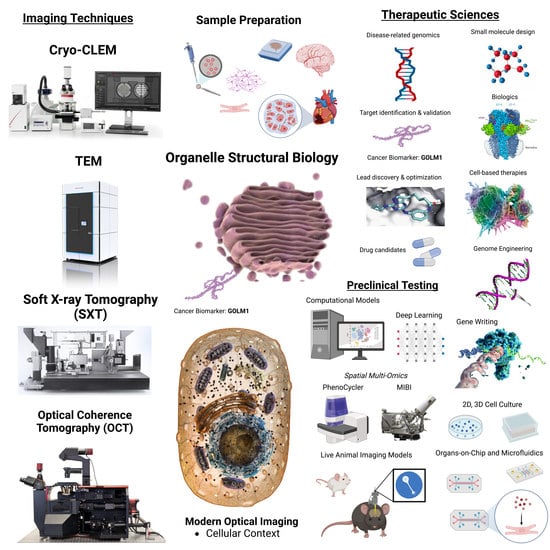Untangling the Microscopic World of Organelles, Cells, Tissues, and Organs: A Focus on the Dysfunctional Golgi Apparatus in Disease Research †
Abstract
:Funding
Institutional Review Board Statement
Informed Consent Statement
Data Availability Statement
Acknowledgments
Conflicts of Interest
Disclaimer/Publisher’s Note: The statements, opinions and data contained in all publications are solely those of the individual author(s) and contributor(s) and not of MDPI and/or the editor(s). MDPI and/or the editor(s) disclaim responsibility for any injury to people or property resulting from any ideas, methods, instructions or products referred to in the content. |
© 2023 by the author. Licensee MDPI, Basel, Switzerland. This article is an open access article distributed under the terms and conditions of the Creative Commons Attribution (CC BY) license (https://creativecommons.org/licenses/by/4.0/).
Share and Cite
Gómez, D.J. Untangling the Microscopic World of Organelles, Cells, Tissues, and Organs: A Focus on the Dysfunctional Golgi Apparatus in Disease Research. Biol. Life Sci. Forum 2023, 21, 15. https://doi.org/10.3390/blsf2023021015
Gómez DJ. Untangling the Microscopic World of Organelles, Cells, Tissues, and Organs: A Focus on the Dysfunctional Golgi Apparatus in Disease Research. Biology and Life Sciences Forum. 2023; 21(1):15. https://doi.org/10.3390/blsf2023021015
Chicago/Turabian StyleGómez, Daniel Joseph. 2023. "Untangling the Microscopic World of Organelles, Cells, Tissues, and Organs: A Focus on the Dysfunctional Golgi Apparatus in Disease Research" Biology and Life Sciences Forum 21, no. 1: 15. https://doi.org/10.3390/blsf2023021015
APA StyleGómez, D. J. (2023). Untangling the Microscopic World of Organelles, Cells, Tissues, and Organs: A Focus on the Dysfunctional Golgi Apparatus in Disease Research. Biology and Life Sciences Forum, 21(1), 15. https://doi.org/10.3390/blsf2023021015






